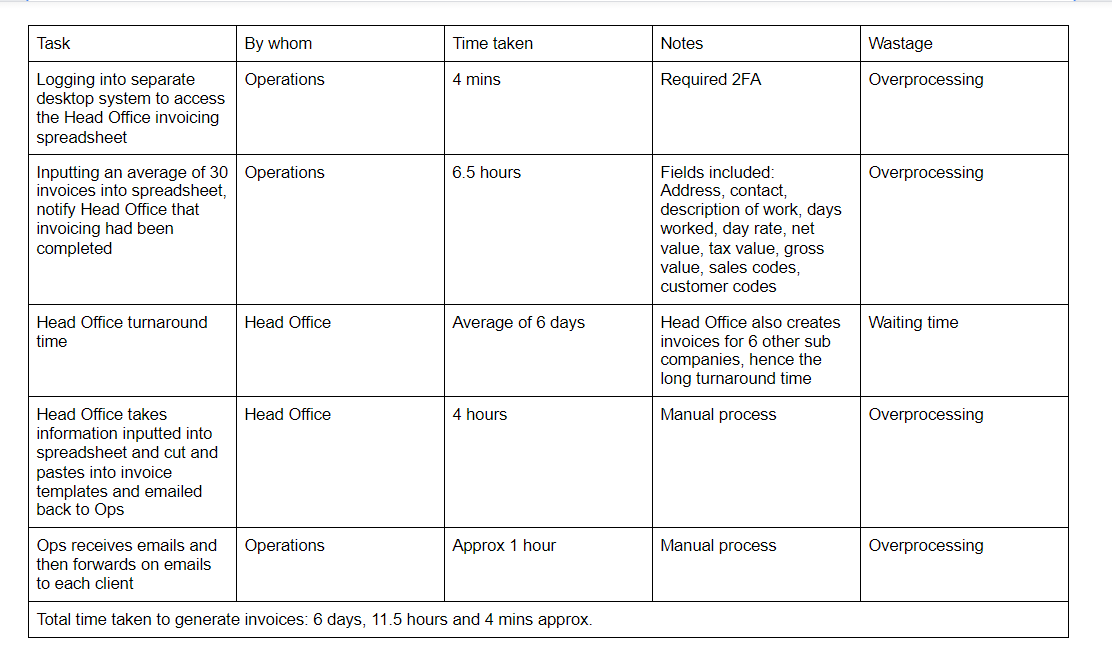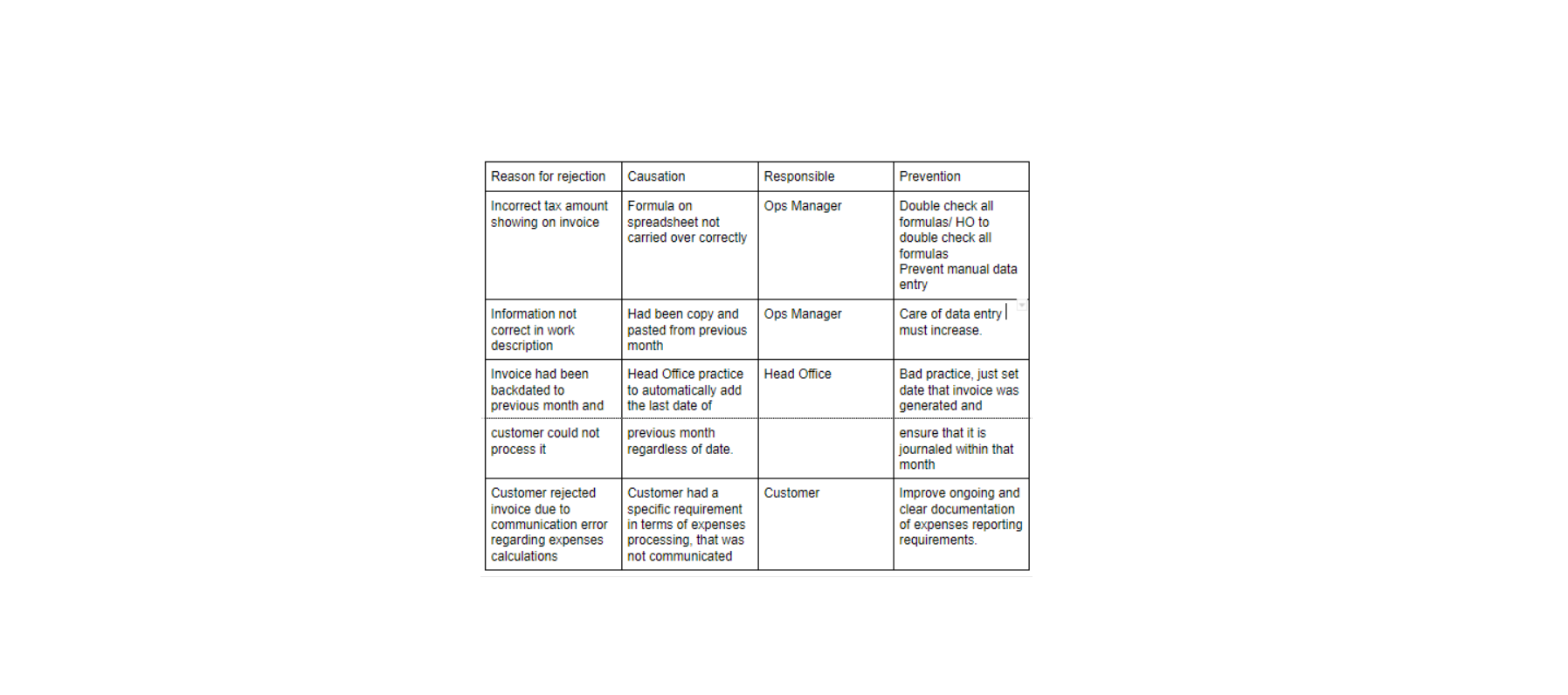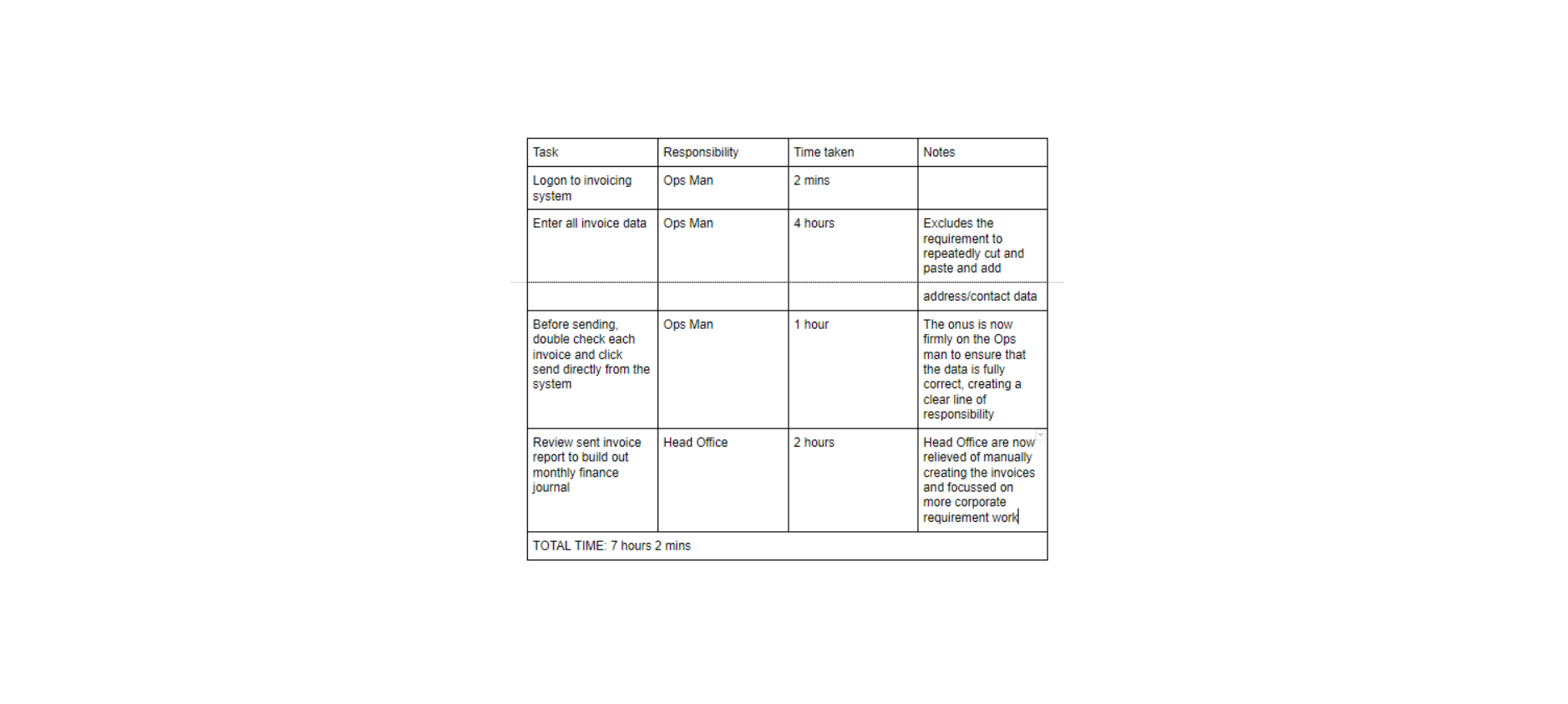
Case Study: Time and Motion in the Invoicing Process

There are two definitive types of business that can benefit from a continuous improvement project: businesses that have undergone acquisitions and secondly businesses that rely on manual processes solely dependant on human interaction - this particular case study killed two birds with one stone.
THE PROBLEM
Following a fairly recent acquisition, this small consultancy had undergone a number of changes, significantly impacting the operational aspect of the business and in particular the migration of most of the finance function to Head Office.
Previously, all invoicing, purchasing and management accounting had been done in house by a qualified finance manager - upon acquisition that role had been transmuted into a wider reaching operations role, with some of the finance functions now handled by Head Office such as creation of the management accounts, while much of the finance admin now handled at sub office level by a newly appointed operations manager.
It became clearly evident that the invoice process currently in place was not supporting the business in the way that it was intended for a number of reasons, it was suspected that the invoice process was taking too long and that manual data entry processes were creating errors on invoices that created rework - overall this was causing a number of issues within the business, cash flow into the business was suffering as invoices were not being issued/paid as , quickly as they should have been. There was not a single finance system that handled sending of invoices and monitoring cash flow, it was done with inputting into several spreadsheets and sending pdf invoices from email addresses. Not only was there a failure in the process, but there was also impact created by people, a stretched operations manager responsible for all areas of the business and an under resourced Head Office team meant that animosity for errors made on both sides was creating a culture of blame, there was a lack of communication of when any of these internal customers would be served and therefore a lack of certainty across the whole process.
ANALYSIS
To really get to the thrux of the matter and to manage the soft “people” skills in a manner that was compassionate to both parties, it was clear that a data driven approach should be sought, with several problem solving tools at hand it was clear to define the following:
How long was the invoice process actually taking on average?
In what areas was the invoice process taking too long?
If invoices were being rejected, what was the reject rate and for what reason were they being rejected?
Time and motion study
A time and motion study was taken across a sample of invoices across a 3 month timespan, the reason for this is that the bulk of invoicing took place on a monthly basis and reports from employees were that there were many variables that would affect the process (e.g. employees absence, annual leave)
The process looked like this (this was based on the operations manager successfully gathering all information required for invoicing already):


